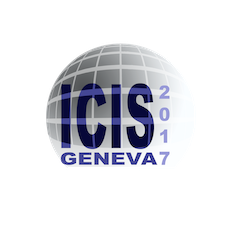Speaker
Description
Low temperature hydrogen plasmas of positive (H$^{+}$, H$^{2+}$, D$^{+}$) and negative (H$^{-}$, D$^{-}$) ion sources are strong sources of vacuum ultraviolet (VUV) radiation. Theoretical calculations based on fundamental conservation laws and reaction cross sections show that at least $10$ % of the applied plasma heating power is dissipated via photon emission. The theoretical result is supported by experimental evidence showing that, depending on the plasma heating mechanism, $8$-$30$ % of the discharge power is radiated at VUV wavelength range. The VUV photons (wavelength $< 150$ nm) carry enough energy to induce a significant emission of photoelectrons when they impinge on a metal surface (typical work function $4$-$5$ eV) on the plasma chamber wall. The emitted photoelectrons might have a considerable effect on plasma properties and especially on the formation of the plasma sheath. We have compared the low temperature hydrogen plasma induced photoelectron emission from molybdenum, aluminium, copper, tantalum, yttrium, nickel, and stainless steel (SAE304) surfaces with different plasma heating methods. For example, in a filament-driven hydrogen arc discharge the total estimated photoelectron current from the plasma chamber walls is on the order of $1$ A per kW of discharge power, which corresponds to almost $10$ % of typical arc current. Photoelectron emission studies also include low work function cesium and rubidium covered surfaces, which are essential for surface production of negative ions. This work summarizes the photoelectron emission experiments and discusses plausible photoelectron induced effects on plasma properties and plasma sheath structure.
